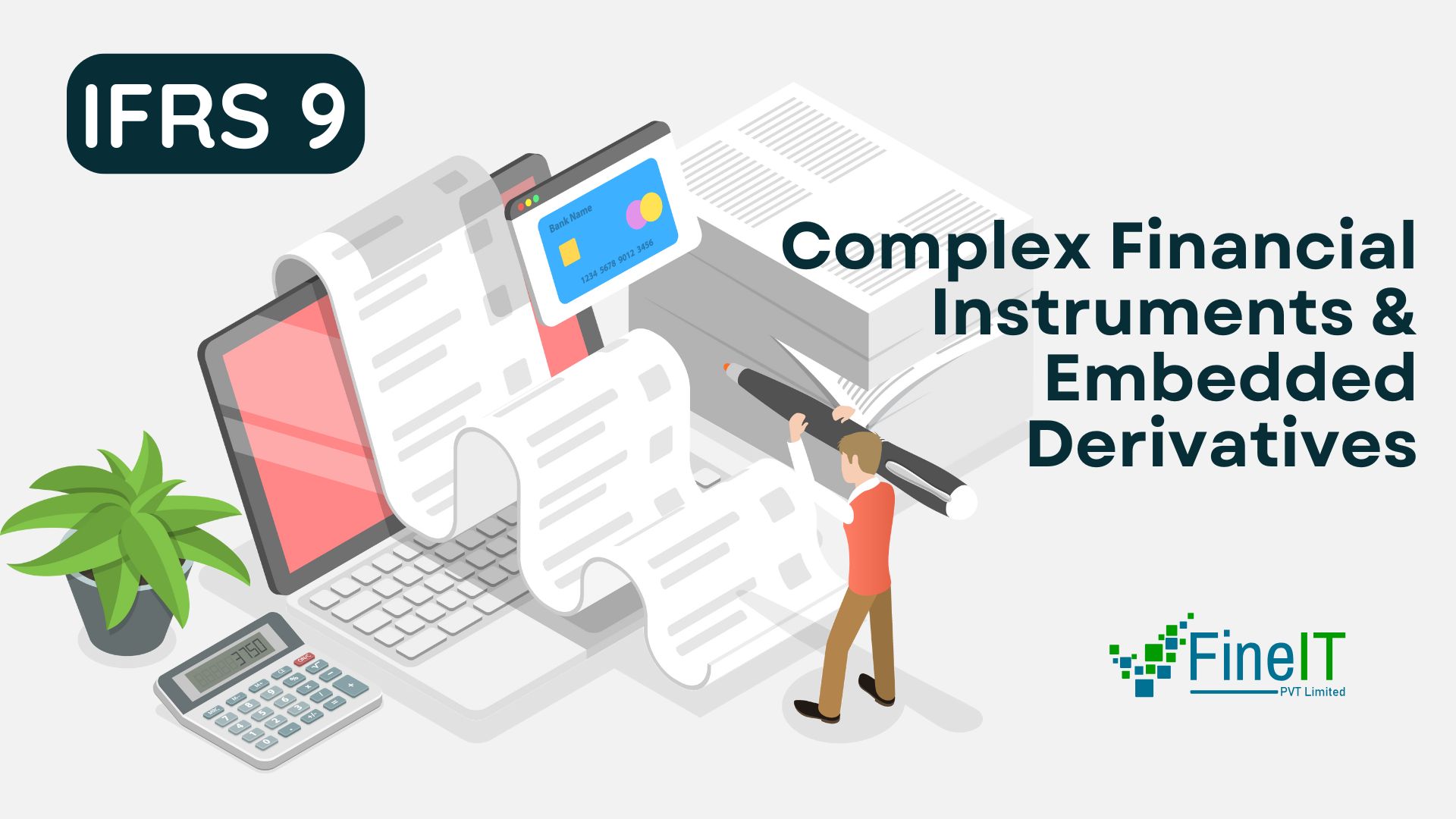Modern financial markets are characterized by increasingly sophisticated financial instruments. These can range from structured notes to convertible bonds — instruments that combine features of both debt and equity or embed derivatives within a host contract. IFRS 9 compliance software requires a clear understanding of the classification and measurement of such instruments, particularly how embedded derivatives are treated. This article demystifies complex financial instruments and outlines how IFRS 9 deals with embedded derivatives.
1. What Are Complex Financial Instruments?
Complex financial instruments are contracts that contain multiple financial features, which may include:
- Hybrid instruments: Instruments with both liability and equity features (e.g., convertible bonds).
- Structured products: Instruments engineered to achieve specific risk-return outcomes.
- Instruments with embedded options: Like callable bonds, caps, floors, and collars.
2. Embedded Derivatives – Definition & Context
An embedded derivative is a component of a hybrid instrument that causes some or all of the cash flows to vary similarly to a standalone derivative. For example:
A bond convertible into equity shares contains an embedded equity derivative.
Example:
A company issues a 5-year bond that gives the investor the right to convert it into a fixed number of equity shares. The option to convert is the embedded derivative.
3. Identification of Embedded Derivatives
Under IFRS 9, entities must:
- Identify whether an embedded derivative exists in a hybrid (combined) instrument.
- Determine whether it should be separated from the host contract and accounted for as a derivative, or
- Measure the entire hybrid instrument at fair value through profit or loss (FVTPL).
Key Considerations:
- Does the economic characteristic and risk of the embedded derivative differ from the host?
- Would the embedded derivative meet the definition of a derivative on a standalone basis?
- Is the hybrid instrument already measured at FVTPL? If yes, then no separation is needed.
4. Accounting Treatment
Case 1: Embedded derivative is closely related
If the embedded derivative is closely related to the host, it is not separated.
Example: A bond in a foreign currency with an embedded interest rate floor — if both elements are closely related, they are accounted for together.
Case 2: Embedded derivative is not closely related
If the embedded derivative is not closely related, and the host is not measured at FVTPL, then it must be separated and accounted for under IFRS 9 as a standalone derivative.
Example: A bond whose return is linked to the stock price of another entity — the embedded equity derivative is not closely related and must be separated.
5. Fair Value Option and Embedded Derivatives
IFRS 9 provides a simplification: If separating an embedded derivative is required, an entity may choose to designate the entire hybrid instrument at FVTPL instead of separating.
Benefit:
- Avoids complexity in bifurcating embedded derivatives.
- Simplifies valuation and avoids inconsistent accounting.
6. Practical Implications & Challenges
- Judgment is key in determining whether components are closely related.
- Entities must have systems in place to identify and value embedded derivatives.
- Frequent changes in fair value can significantly impact P&L under FVTPL classification.
- Documentation at initial recognition is critical, especially when designating at FVTPL.
7. Regulatory and Disclosure Requirements
IFRS 9 and IFRS 7 require:
- Detailed disclosure of risks and valuation techniques.
- Clear distinction between derivative components and host contracts.
- Transparent reporting of fair value changes in profit or loss.
Conclusion
Understanding and correctly accounting for complex financial instruments, especially those with embedded derivatives, is essential for compliance with IFRS 9. Entities should develop robust policies, ensure strong documentation, and apply consistent valuation practices. For many institutions, particularly in banking and insurance, failure to handle these correctly can result in significant misstatements in financial reporting.
In the next article, we will explore one of the core pillars of IFRS 9: the Expected Credit Loss (ECL) model, and how it revolutionized the way impairment is recognized.
